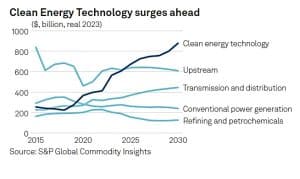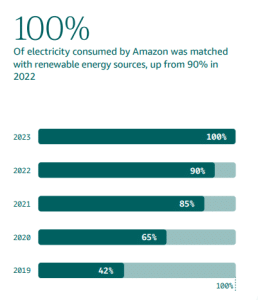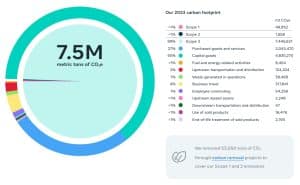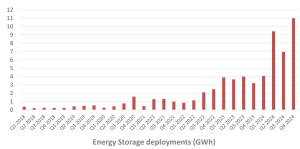UEC Reports Stellar $49.8M Revenue as Net-Zero Uranium Strategy Gains Momentum
Uranium Energy Corp (UEC) is making big strides in the uranium industry. With strong financial results, strategic acquisitions, and a growing focus on sustainability, the company is positioning itself as a leader in clean energy.
In the second quarter of the fiscal year 2025, UEC reported impressive revenue, expanded its domestic uranium production, and strengthened its commitment to net-zero emissions. Here’s a closer look at how UEC is shaping the future of nuclear energy.
Strong Financials Fuel UEC’s Growth
UEC generated a revenue of $49.8 million from selling 600,000 pounds of U₃O₈ (uranium ore concentrate) at an average price of $82.92 per pound. This resulted in a gross profit of $18.2 million.
Additionally, UEC maintained an inventory of 1,356,000 pounds of U₃O₈, valued at $97.3 million based on current market prices. The uranium company has strong liquidity, holding $214 million in liquid assets and no debt. This positions the company well for future growth and stability in operations.
The company’s President and CEO remarked on their financial results, saying:
“This quarter, UEC achieved significant milestones in production ramp-up, acquisitions, sales and construction across our project pipeline…Financial strength remains a cornerstone of our growth strategy, with over $214 million(4) in liquid assets and zero debt as of January 31, 2025. Our strong balance sheet, combined with the low capital intensity of ISR operations, provides the capability to accelerate production growth in a rapidly tightening uranium market.”
UEC is boosting U.S. uranium production through the following initiatives:
Christensen Ranch and Irigaray Processing Plant. UEC has restarted the Christensen Ranch In-Situ Recovery (ISR) Mine. It’s located in Wyoming’s Powder River Basin. Uranium-loaded resin is now on the way from the Christensen Ranch Satellite Plant to the Irigaray Central Processing Plant. This plant can produce 4.0 million pounds of U₃O₈ each year.
Burke Hollow ISR Mine is growing in Texas. Right now, 32 workers are on the job. This expansion aligns with UEC’s strategy to enhance domestic uranium production.
UEC bought Rio Tinto’s Wyoming uranium assets. This includes the Sweetwater Plant, which can process 3,000 tons per day. It has a licensed capacity of 4.1 million pounds of U₃O₈ each year. This acquisition strengthens UEC’s position in the uranium market.
Roughrider Project. UEC’s Roughrider Project in Saskatchewan, Canada, shows great economic promise. The project is among the lowest 15% in global production costs.
In addition to its robust financial performance, UEC is positioned to benefit from the growing interest in Small Modular Reactors (SMRs), which offer significant advantages over traditional large-scale nuclear plants. SMRs are smaller, scalable, and faster to build, making them ideal for flexible power generation. They require less capital upfront, have shorter construction times, and can be strategically located near electricity demand centers, reducing transmission losses and infrastructure costs.
Several countries, including Canada and the United States, are actively investing in SMR technology, aiming to expand clean energy capacity and reduce reliance on fossil fuels. As a key uranium supplier, UEC will play a crucial role in providing the necessary fuel for these reactors, supporting a stable energy transition and enabling countries to meet ambitious climate goals.
Net-Zero Uranium: UEC’s Sustainability Roadmap
The demand for uranium is outpacing primary production, with a 1-billion-pound supply gap projected by 2040, according to UEC. As 31+ countries pledge to triple nuclear energy capacity by 2050, the push for uranium intensifies.

In the U.S., government policies favor domestic uranium production, banning Russian imports and funding nuclear technology. Additionally, big tech companies, driven by rising data center electricity demands, are turning to nuclear power for clean energy solutions.

UEC, as America’s largest uranium supplier, is positioned to benefit from this shift, ensuring a stable domestic supply amid increasing reliance on nuclear energy for net-zero goals (1.5C Pathway).

Commitment to Net-Zero and Emissions Reduction
Uranium Energy Corp is focused on achieving net-zero carbon emissions across its U.S. ISR operations. In 2023, the company remained CO₂ neutral from its operations for the second consecutive year. The company has also conducted a decarbonization study for its Texas ISR facilities to align with this goal.
UEC has expanded its Scope 1 and Scope 2 emissions measurements to cover all operational locations, ensuring comprehensive tracking of its environmental impact. A decarbonization strategy for its Wyoming facilities is also in progress.
- In 2023, the company reported total greenhouse gas (GHG) emissions of 2,711.86 tCO₂e, with Wyoming contributing the most (1,475.23 tCO₂e). Scope 1 emissions totaled 1,343.77 tCO₂e, while Scope 2 reached 1,368.09 tCO₂e.

The company is also looking at new carbon-reduction technologies. This will help it cut down emissions even more.
Sustainable Mining Practices
UEC uses In-Situ Recovery (ISR) mining. This method is eco-friendly – it cuts down on surface disturbance and uses less water and energy. This approach avoids blasting and moving waste rock. So, it leads to lower emissions and less harm to the environment than traditional mining methods.
The ISR process greatly cuts greenhouse gas emissions. This is better than open-pit or underground mining. Traditional uranium mining methods release higher levels of CO₂ due to the heavy use of diesel-powered equipment and the need for extensive land excavation.
By using ISR technology, UEC is able to cut CO₂ emissions, making uranium extraction cleaner and more sustainable. The company is exploring alternative energy sources. It looks at solar and wind to power its mining operations, aiming to reduce carbon impact.
Carbon Offsets and Renewable Energy Investments
To further reduce its carbon footprint, Uranium Energy Corp has invested in carbon credits to offset emissions. In 2023, the company neutralized all its corporate emissions. This totaled 2,712 metric tons of CO₂ equivalent (tCO₂e). They achieved this by buying carbon credits from the A-Gas Voluntary Emission Reduction Program in Texas.
This initiative helps prevent the release of used hydrofluorocarbons (HFCs), which are significantly more damaging to the environment than CO₂. Supporting this program lets UEC reclaim and destroy harmful gases. This way, they don’t get released into the atmosphere.
In addition to carbon offsets, UEC has also invested in Renewable Energy Certificates (RECs) for its Palangana ISR site in Texas. These certificates help create clean energy. This reduces the company’s dependence on fossil fuels.
UEC is committed to lowering its environmental impact. It does this by combining carbon offsetting with renewable energy purchases in its sustainability strategy. This approach supports responsible uranium production.
Nuclear Power’s Role in a Low-Carbon Future
UEC plays a key role in the transition to clean energy by supplying uranium for nuclear power, a low-carbon alternative to fossil fuels. Nuclear energy supplies 55% of the U.S.’s carbon-free electricity. This cuts emissions like taking 107 million gas cars off the road each year.
The company is aligned with global net-zero commitments, including the COP28 pledge to triple nuclear energy capacity by 2050. UEC has also begun evaluating a net-zero mine design for its Roughrider Project, further integrating sustainability into its operations.
Uranium Energy Corp’s strong financial performance, strategic acquisitions, and commitment to sustainability highlight its leadership in the uranium sector. UEC focuses on clean energy, cutting emissions, and responsible mining. This puts them in a strong position to help the world shift to a low-carbon future.
For real-time insights into uranium pricing, visit our Live Uranium Pricing page.
The post UEC Reports Stellar $49.8M Revenue as Net-Zero Uranium Strategy Gains Momentum appeared first on Carbon Credits.













































